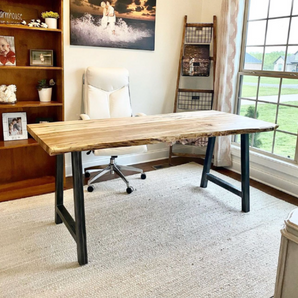Checking Out Different Designs for Dining Room Table Legs to Match Your Aesthetic
Checking Out Different Designs for Dining Room Table Legs to Match Your Aesthetic
Blog Article
A Thorough Look at Dining Table Leg Styles: Discovering the Ideal Suit
Picking the appropriate eating table leg design is important for both visual charm and useful capability. For those with bigger tables, trestle legs make certain durable support, whereas barrette legs present a mid-century modern-day ambiance with their minimalist design. The x-shaped legs mix modern design with boosted security.
Traditional 4 Legs
Among the different types of eating table leg designs, the typical four-leg design stays a classic choice for many families. 4 legs provide balanced support, making certain the table remains stable and qualified of bearing considerable weight (dining room table legs).
From a visual viewpoint, the traditional four-leg style can be quickly adapted to various interior styles. Whether crafted from wood, metal, or a mix of materials, these legs can be elaborately sculpted, smooth and minimalistic, or anything in between. Their convenience permits them to enhance both rustic and modern setups flawlessly.
Furthermore, the uncomplicated framework of the four-leg layout assists in simplicity of movement and positioning within a space. Unlike more facility bases, this style minimizes blockages, offering ample legroom for restaurants. In summary, the typical four-leg dining table leg style weds enduring style with useful functionality, making it a sharp choice for those looking for both form and feature in their dining furnishings.
Stand Base
Commonly celebrated for its classy and space-efficient design, the stand base is a prominent option to the traditional four-leg setup in dining table leg styles. This distinct base usually includes a single main column sustaining the tabletop, which can differ in kind, from ornately carved timber to streamlined, contemporary steel. Among the primary benefits of the stand base is its ability to take full advantage of legroom and seating flexibility. Without corner legs, restaurants are managed greater flexibility of activity, making it a perfect option for round and oblong tables that promote more intimate and inclusive celebrations.
The main column itself supplies a canvas for complex designs and imaginative expressions, including an element of aesthetic rate of interest below the table. In recap, the pedestal base combines capability with style, making it a refined and functional choice for varied dining environments.
Trestle Legs
Trestle legs give a durable and timeless structure for dining tables, identified by their horizontal cross-bracing and tough support light beams. Originating from middle ages times, this style has actually progressed yet retained its essential framework, making it a perennial favorite in both traditional and contemporary setups. The central trestle light beam, frequently sustained by two or even more upright messages, supplies outstanding stability, enabling for bigger table lengths without the requirement for additional legs.
A considerable benefit of trestle leg tables is the sufficient legroom they supply. Unlike tables with four corner legs, the absence of blockages at the table's sides supplies unobstructed room for chairs and diners, improving convenience and accessibility. This makes check this site out trestle tables excellent for accommodating larger celebrations, whether in a dining room or a reception hall.
The visual versatility of trestle legs is notable. Readily available in a variety of materials such as wood, steel, and composite, they can be ended up to enhance a broad variety of indoor designs. From rustic farmhouse to streamlined modern designs, trestle legs can be personalized to fit specific preferences. Their long-lasting allure and functional benefits make trestle legs a compelling option for those seeking both style and functionality in their eating table.
Barrette Legs

The charm of barrette legs lies in their simpleness and versatility - dining room table legs. Offered in a series of materials, consisting of steel and brass, they can be ended up in numerous colors to enhance different interior styles. Whether coupled with a rustic wooden tabletop or a modern glass surface area, barrette legs effortlessly blend performance with a touch of vintage beauty
Toughness is one more notable function of barrette legs. In spite of their fragile appearance, these legs are engineered to bear significant weight, ensuring the table stays secure and secure. Additionally, they are fairly simple to mount, making them a preferred selection for DIY enthusiasts and professional furniture makers alike.
X-Shaped Legs

Built from materials such as steel, wood, or a mix of both, X-shaped legs can be tailored to match numerous style choices. Steel legs usually offer a sleek and commercial feeling, ideal for loft-style apartment or condos and modern dining rooms. On the various other hand, wood X-shaped legs supply a warmer, extra rustic charm, appropriate for farmhouse or eclectic interiors. The convenience in materials enables home owners to personalize their eating tables to much better fit their overall style plan.
In addition, the engineering behind X-shaped legs guarantees even weight distribution, decreasing the threat of tottering and boosting sturdiness. This makes them especially fit for bigger eating tables that call for added assistance. In essence, X-shaped legs blend practical engineering with have a peek at this site modern aesthetic appeals, making them a timeless option for diverse dining environments.
Final Thought
An extensive understanding of eating table leg designs reveals the distinctive features and benefits of each design. Trestle legs make certain robust assistance for bigger tables, and hairpin legs present a mid-century contemporary visual.
Report this page